SLUSBY5G June 2014 – December 2015
UNLESS OTHERWISE NOTED, this document contains PRODUCTION DATA.
- 1 Features
- 2 Applications
- 3 Description
- 4 Revision History
- 5 Pin Configuration and Functions
- 6 Specifications
-
7 Detailed Description
- 7.1 Overview
- 7.2 Functional Block Diagram
- 7.3 Feature Description
- 7.4
Device Functional Modes
- 7.4.1 High Impedance Mode
- 7.4.2 Battery Only Connected
- 7.4.3 Input Connected
- 7.4.4 Battery Charging Process
- 7.4.5 Charge Time Optimizer
- 7.4.6 Battery Detection
- 7.4.7 Battery Overvoltage Protection (BOVP)
- 7.4.8 Dynamic Power Path Management
- 7.4.9 Battery Discharge FET (BGATE)
- 7.4.10 IUSB1, IUSB2, and IUSB3 Input
- 7.4.11 Safety Timer in Charge Mode
- 7.4.12 LDO Output (DRV)
- 7.4.13 External NTC Monitoring (TS)
- 7.4.14 Thermal Regulation and Protection
- 7.4.15 Status Outputs (CHG, PG)
- 7.4.16 Boost Mode Operation
- 8 Applications and Implementation
- 9 Power Supply Recommendations
- 10Layout
- 11Device and Documentation Support
- 12Mechanical, Packaging, and Orderable Information
Package Options
Mechanical Data (Package|Pins)
- RGE|24
Thermal pad, mechanical data (Package|Pins)
Orderable Information
6 Specifications
6.1 Absolute Maximum Ratings(1)
over operating free-air temperature range (unless otherwise noted)(1) Stresses beyond those listed under absolute maximum ratings may cause permanent damage to the device. These are stress ratings only, and functional operation of the device at these or any other conditions beyond those indicated under recommended operating conditions is not implied. Exposure to absolute-maximum-rated conditions for extended periods may affect device reliability. All voltage values are with respect to the network ground pin unless otherwise noted.
6.2 ESD Ratings
| VALUE | UNIT | |||
|---|---|---|---|---|
| V(ESD) | Electrostatic discharge | Human body model (HBM), per ANSI/ESDA/JEDEC JS-001, all pins(1) | ±2000 | V |
| Charged device model (CDM), per JEDEC specification JESD22-C101, all pins(2) | ±500 | V | ||
(1) JEDEC document JEP155 states that 500-V HBM allows safe manufacturing with a standard ESD control process.
(2) JEDEC document JEP157 states that 250-V CDM allows safe manufacturing with a standard ESD control process.
6.3 Recommended Operating Conditions
over operating free-air temperature range (unless otherwise noted)| MIN | NOM | MAX | UNIT | ||
|---|---|---|---|---|---|
| VIN | IN voltage range | 4.2 | 13.5(1) | V | |
| IN operating voltage range | 4.2 | 14 | |||
| IIN | Input current, IN input | 2.5 | A | ||
| ISW | Output Current from SW, DC | 3 | A | ||
| IBAT, ISYS | Charging | 3 | A | ||
| Discharging, using internal battery FET | 3 | ||||
| TJ | Operating junction temperature range | 0 | 125 | °C | |
(1) The inherent switching noise voltage spikes should not exceed the absolute maximum rating on either the BOOT or SW pins. A tight layout minimizes switching noise.
6.4 Thermal Information
| THERMAL METRIC(1) | bq24266 | UNIT | |
|---|---|---|---|
| RGE (24 PINS) |
|||
| RθJA | Junction-to-ambient thermal resistance | 32.6 | °C/W |
| RθJC(top) | Junction-to-case (top) thermal resistance | 30.5 | °C/W |
| RθJB | Junction-to-board thermal resistance | 3.3 | °C/W |
| ψJT | Junction-to-top characterization parameter | 0.4 | °C/W |
| ψJB | Junction-to-board characterization parameter | 9.3 | °C/W |
| RJC(bot) | Junction-to-case (bottom) thermal resistance | 2.6 | °C/W |
(1) For more information about traditional and new thermal metrics, see the IC Package Thermal Metrics application report, SPRA953.
6.5 Electrical Characteristics
Circuit of , VUVLO < VIN < VOVP AND VIN > VBAT+ VSLP, TJ = –40°C to 125°C and TJ = 25°C for typical values (unless otherwise noted)6.6 Switching Characteristics
over operating free-air temperature range (unless otherwise noted)| PARAMETER | TEST CONDITIONS | MIN | TYP | MAX | UNIT | |
|---|---|---|---|---|---|---|
| fOSC | Oscillator frequency | 1.35 | 1.5 | 1.65 | Mhz | |
| DMAX | Maximum duty cycle | 95% | ||||
| DMIN | Minimum duty cycle | 0% | ||||
6.7 Typical Characteristics
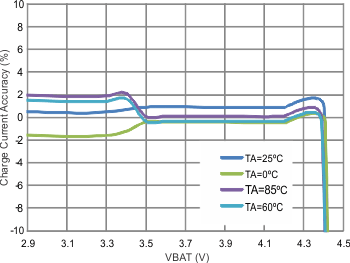 Figure 1. Charge Current vs Battery Voltage
Figure 1. Charge Current vs Battery Voltage
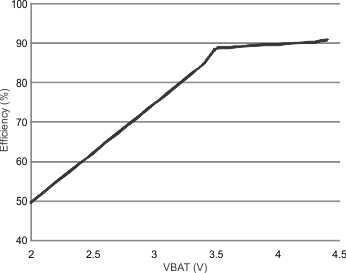 Figure 3. Efficiency vs Battery Voltage
Figure 3. Efficiency vs Battery Voltage
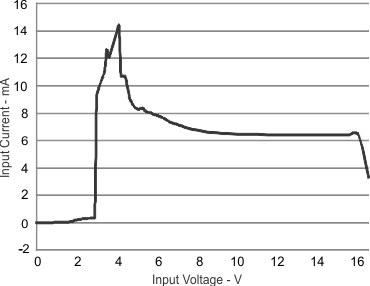 Figure 5. Input IQ - No Battery, No System
Figure 5. Input IQ - No Battery, No System
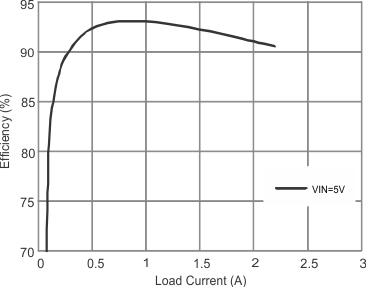 Figure 2. Efficiency vs Output Current
Figure 2. Efficiency vs Output Current
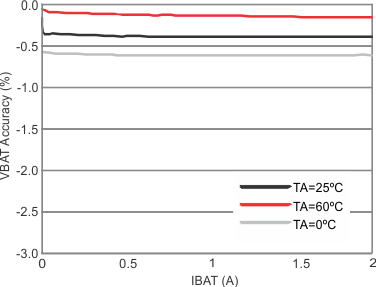 Figure 4. VBAT Accuracy vs IBAT – 4.2 VBAT
Figure 4. VBAT Accuracy vs IBAT – 4.2 VBAT
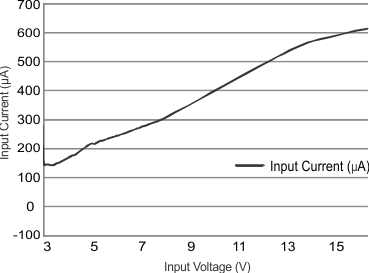 Figure 6. Input IQ with Hi-Z Enabled
Figure 6. Input IQ with Hi-Z Enabled